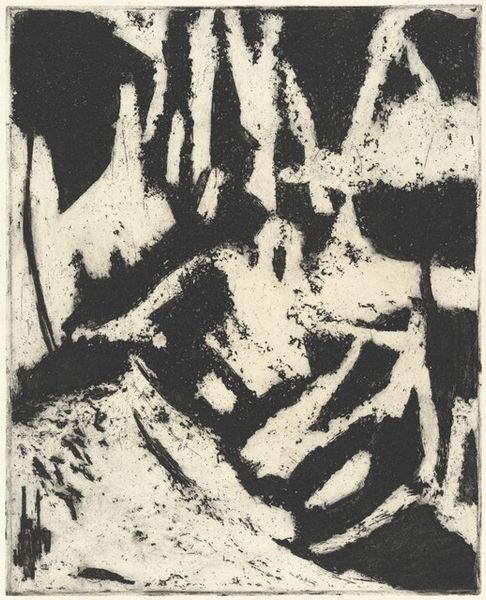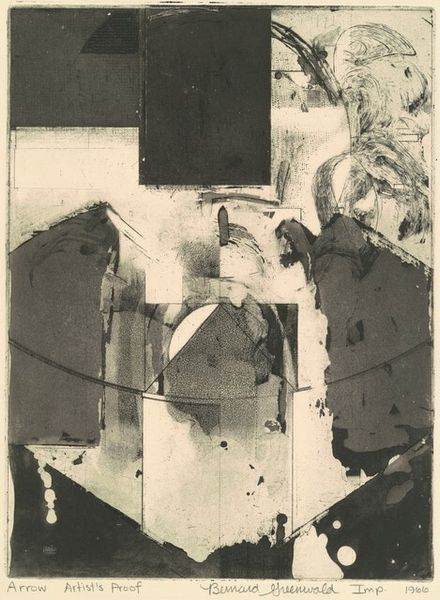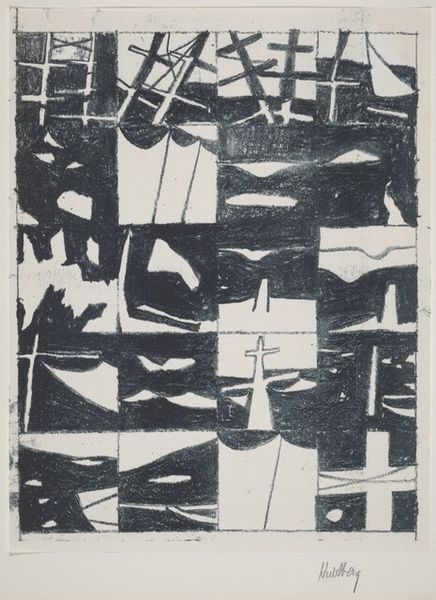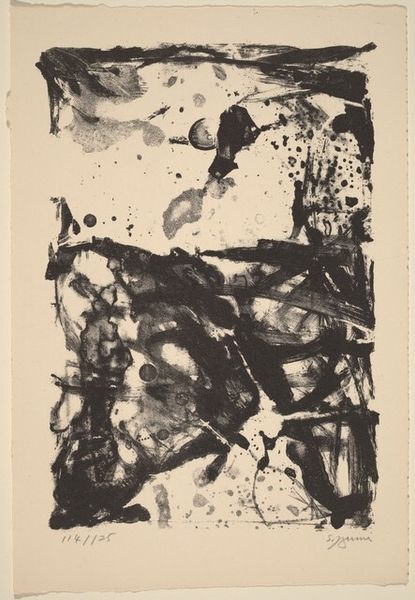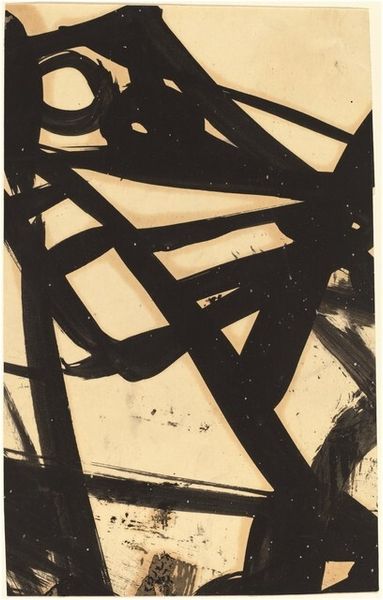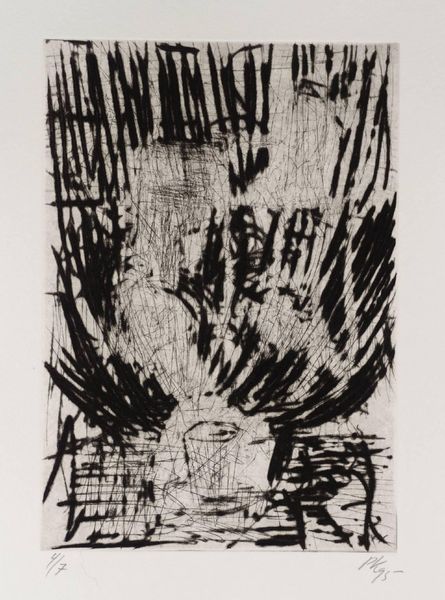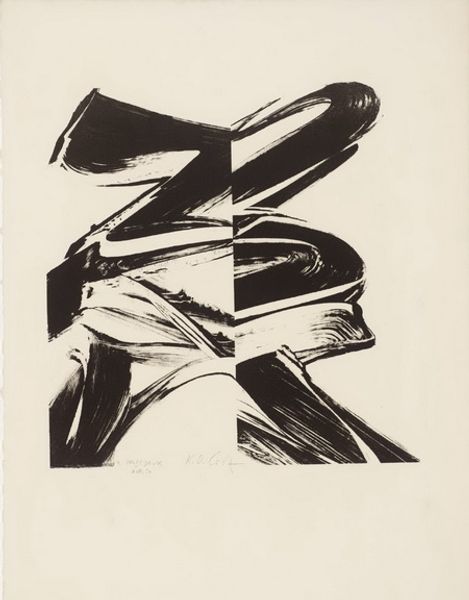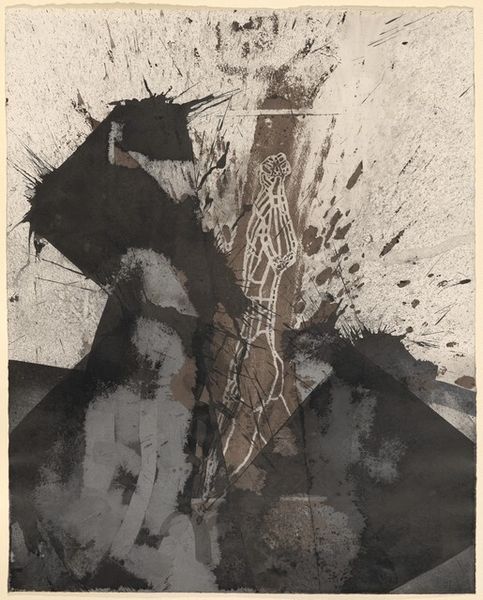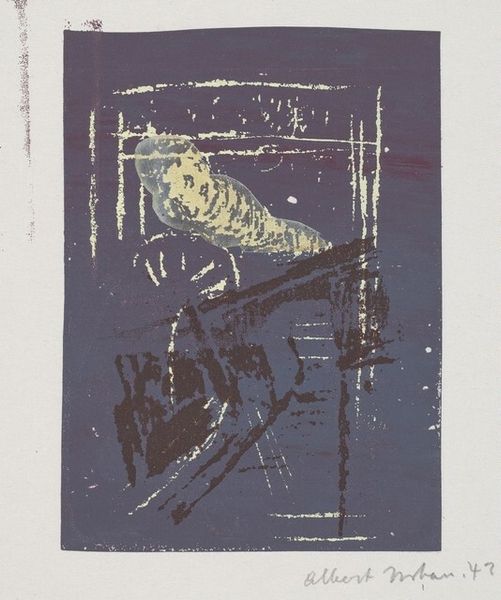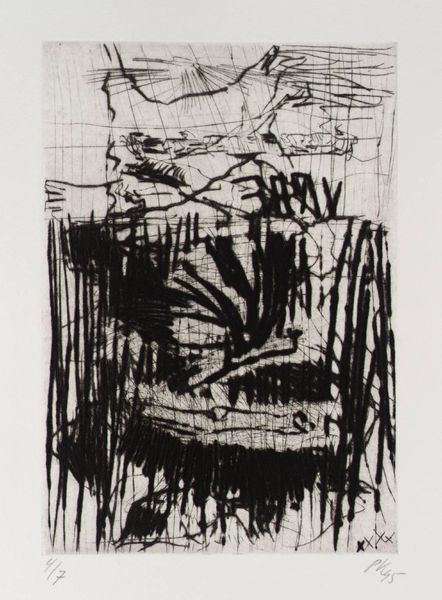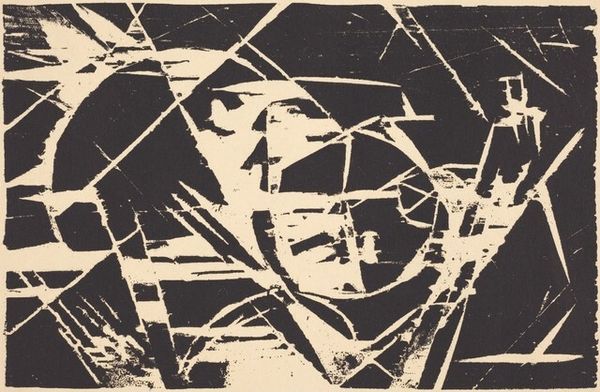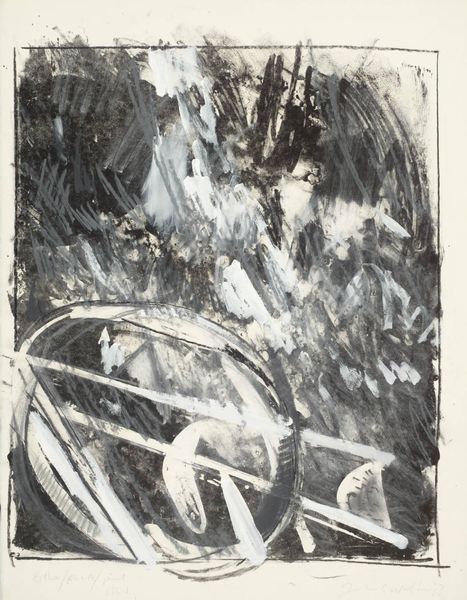
Dimensions: image: 24.77 × 20.64 cm (9 3/4 × 8 1/8 in.) sheet: 32.39 × 32.7 cm (12 3/4 × 12 7/8 in.)
Copyright: National Gallery of Art: CC0 1.0
Curator: Welcome. Here we have Maria Bonomi's 1958 woodcut print, titled "Drowned Shadow." Editor: The stark black and white creates a powerful emotional landscape. I immediately sense anxiety, maybe even dread. Curator: It is a very interesting example of abstract expressionism combined with the black arts movement influences, wouldn't you agree? The strong contrasts come from the carving technique used on the wood block itself, and you can really see the mark of the artist's hand in the texture. Considering the post-war socio-political environment in Brazil at the time, I see her exploring abstraction not merely as a stylistic choice, but also engaging with a cultural push to re-establish art and graphics within popular culture in Brazil. Editor: That bold geometry, those forceful diagonal lines. They evoke a sense of disruption, like fragments of shattered meaning. It also reminds me of early 20th-century Futurist manifestos which celebrate urban landscapes. Curator: Well, the influence is clear, especially when you look at how geometric forms become representational tools for expression and exploring meaning. Looking closer at Bonomi’s methodology gives more meaning; I am especially interested in thinking of the influence and reinterpretation of a traditional art form. Editor: You’re right. Shadow, water...they can be really heavy symbols. Is Bonomi drowning ideas in an age of chaos? The simplicity of black and white becomes potent. A singular impression, repeated in sequence for accessibility in reproduction – mass consciousness. Curator: Exactly, it's an accessible method of production, yet the woodcut carries a weighty, almost ancient association. So, it sits in a tense and yet productive dialogue with modernism itself. Editor: Well, this piece provides ample symbolic material to explore from those perspectives. Thank you! Curator: A pleasure! I appreciate your reflections on what this artwork communicates to us.
Comments
No comments
Be the first to comment and join the conversation on the ultimate creative platform.
